Eggs in a Nest
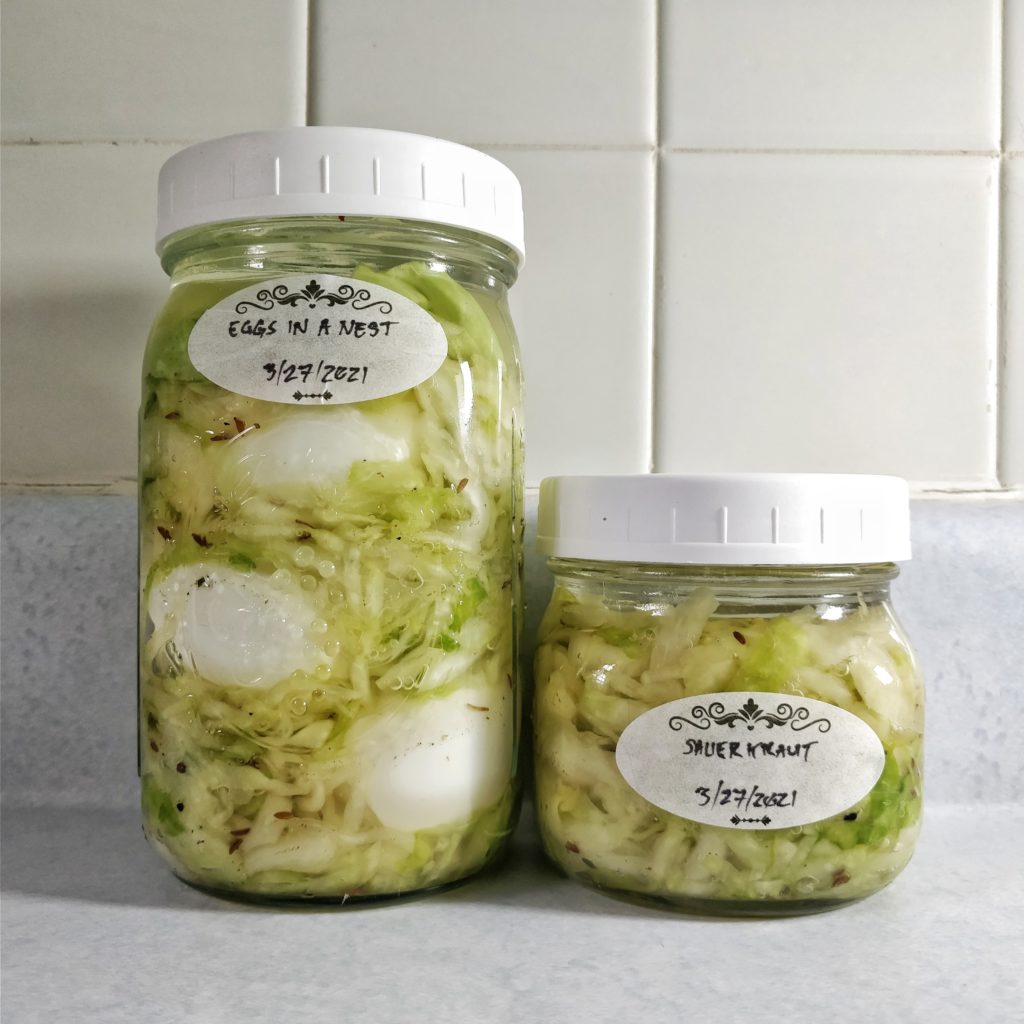
Easter is a week away (already?) and I’ve just realized that I haven’t pickled any eggs! My family has a tradition from my maternal grandfather of pickling hard-boiled eggs in the brine from sweet vinegar pickled beets (recipe coming soon!), which I make every year from the beets I grow in the garden. Last year I didn’t think to make any, since my mom has taken on the task of making these (with my pickled beets) after my grandfather passed away over a decade ago. But this year, since we’re still not gathering in person due to the ongoing pandemic (I’ve got my vaccine appointment scheduled!) I’ve remembered to throw some in the brine.
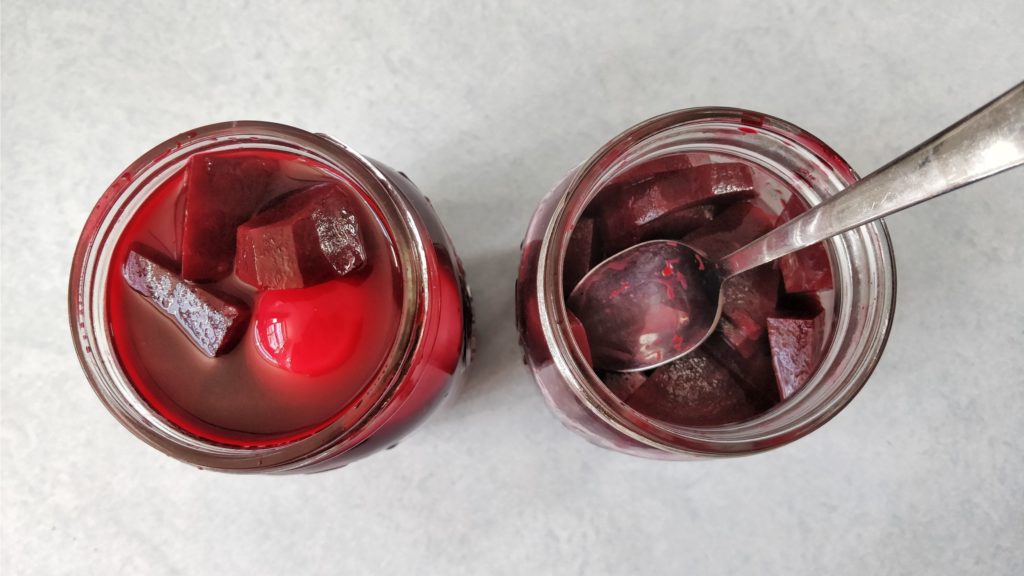
But this year I wanted to try something new that I’ve never done before: lacto-fermented eggs. After doing a little bit of research, I’m not sold on just adding some hard-boiled eggs to a salt brine and letting it ferment. My main concern is that there isn’t much in the way of carbohydrates for the bacteria to feed on in order to produce the acidity required for pickling. It occurs to me that you could simply add some sugar to the the brine, but I also still have some cabbage from St. Patrick’s Day that needs turning into sauerkraut, and this seemed like a perfect way to ensure a very active fermentation.
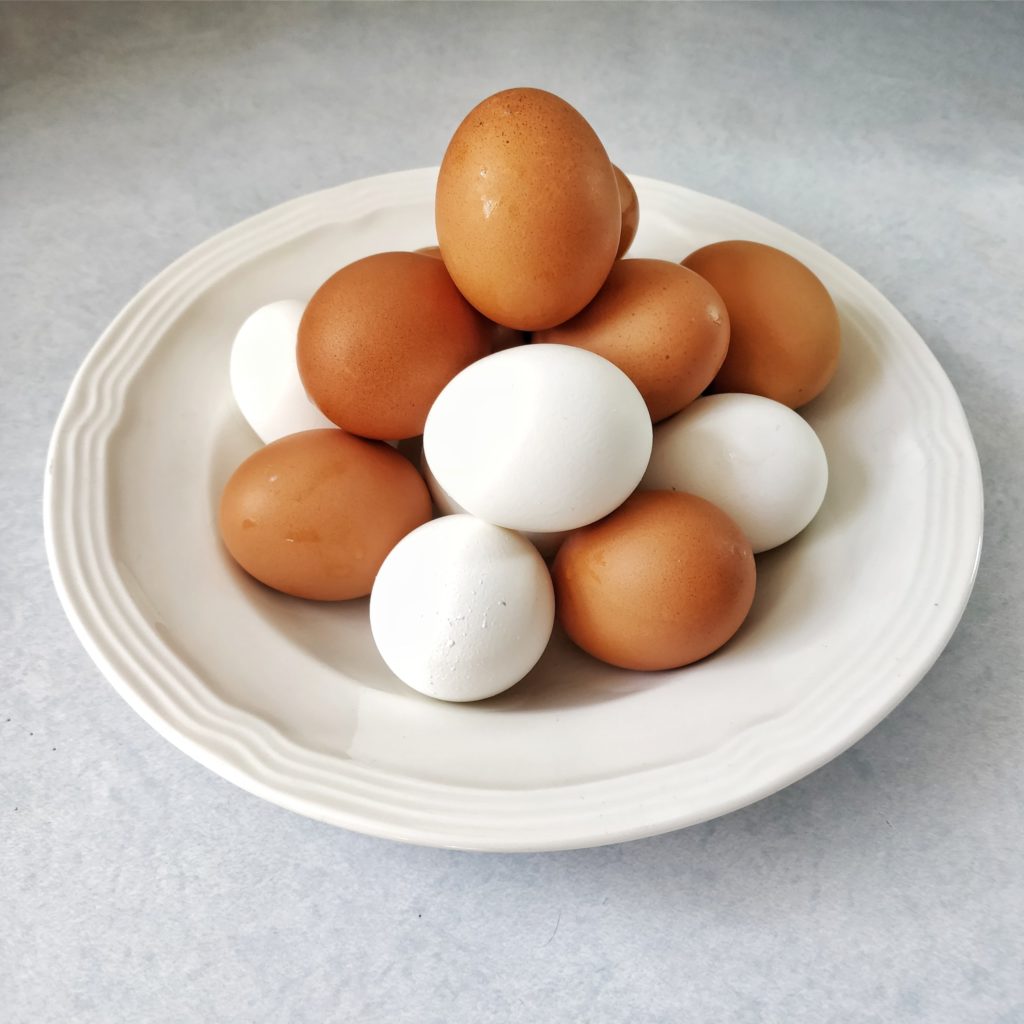
Sauerkraut is one of those ferments that has always been very successful for me. I’ve never had a batch grow mold or kham yeast. Some of this may likely be due to the practice of backslopping—ensuring that a culture of beneficial bacteria is quickly established—but, anecdotally, a lot of my other vegetable ferments still end up a bit cloudy. I want my first batch of fermented eggs to be as successful as possible, so the obvious choice is kraut!
- 770g cabbage
- 300g (6) eggs, hard-boiled and peeled
- 22g salt (2%)
- 1 Tbsp or so brine from the last batch of sauerkraut
- 1 tsp caraway seeds
- a few cranks of black pepper
I chopped the half head of cabbage in half and cut out the stem, and then I cut it up with a knife into thin but not too perfectly even slices. I usually use 1.5% salt for my sauerkraut, but with the addition of eggs I’m bumping it up to 2%. This is calculated based on the total weight of both the eggs and the cabbage, and I’ve added all of the salt to the cabbage in a big bowl. After about 2 hours of letting it sit and occasionally mashing, squeezing, and kneading with my hands, it had released enough liquid that I was fairly confident it would cover the eggs.
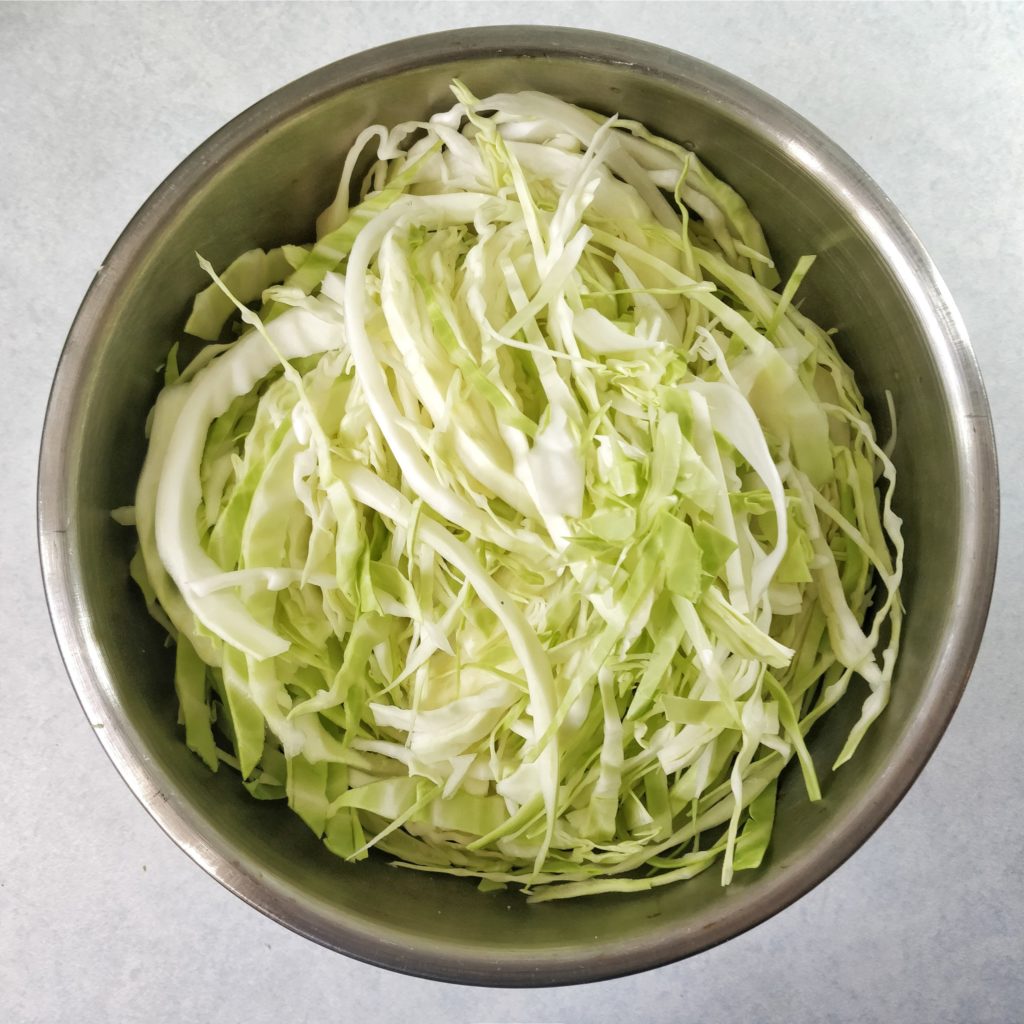

Now all that was left to do was to add the caraway & pepper, splash in a little brine from a previous batch (this is key for quick fermentation), and pack the kraut and eggs into a mason jar, in this case a quart-sized one. I had enough kraut left over to fill a wide-mouth pint jar as well.* Normally I would pack sauerkraut down as densely as possible to ensure that it’s own released brine would cover the top, but I can’t do that with the eggs inside. I did eventually add a couple of tablespoons of extra 2% salt brine to ensure everything was covered. I covered the top with a piece of one of the outer leaves and did add a small glass weight as well.
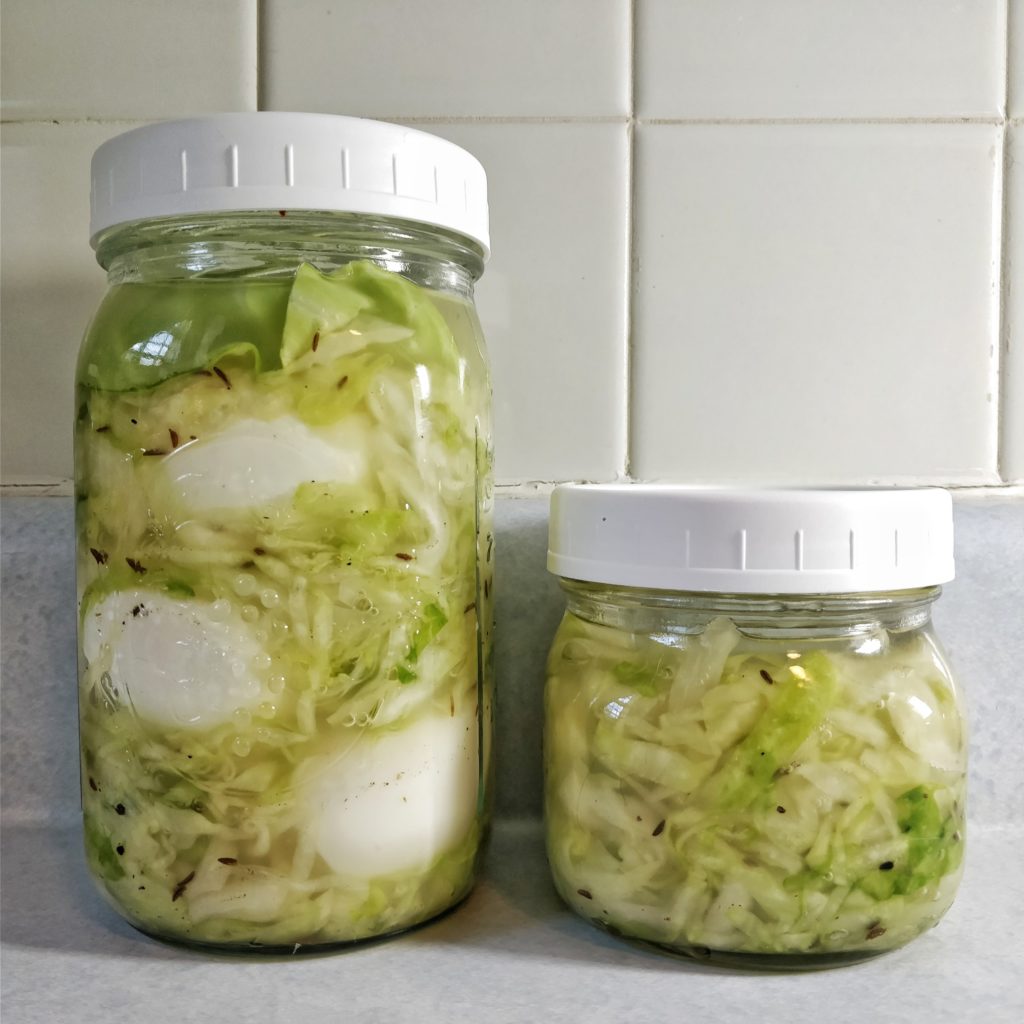
I swear that I didn’t have “Eggs in a Nest” in mind when I started this. Honestly I was just going to throw a few chunks of cabbage in and call it a day, but since I had an entire half of a head of cabbage that needed to be used, I decided to just make some sauerkraut while I was at it. Now, let’s just hope that a week is enough time to ferment before the big day!
Day 7—4/4

The day of the feast arrived! I excitedly dug into the kraut to find these somewhat wrinkly things. They have firmed up slightly, and do not have quite as much give as a fresh hardboiled egg, breaking sooner if bent. I found this out when I was attempting to dig out the yolk to make deviled eggs, but I managed to keep most of them intact.
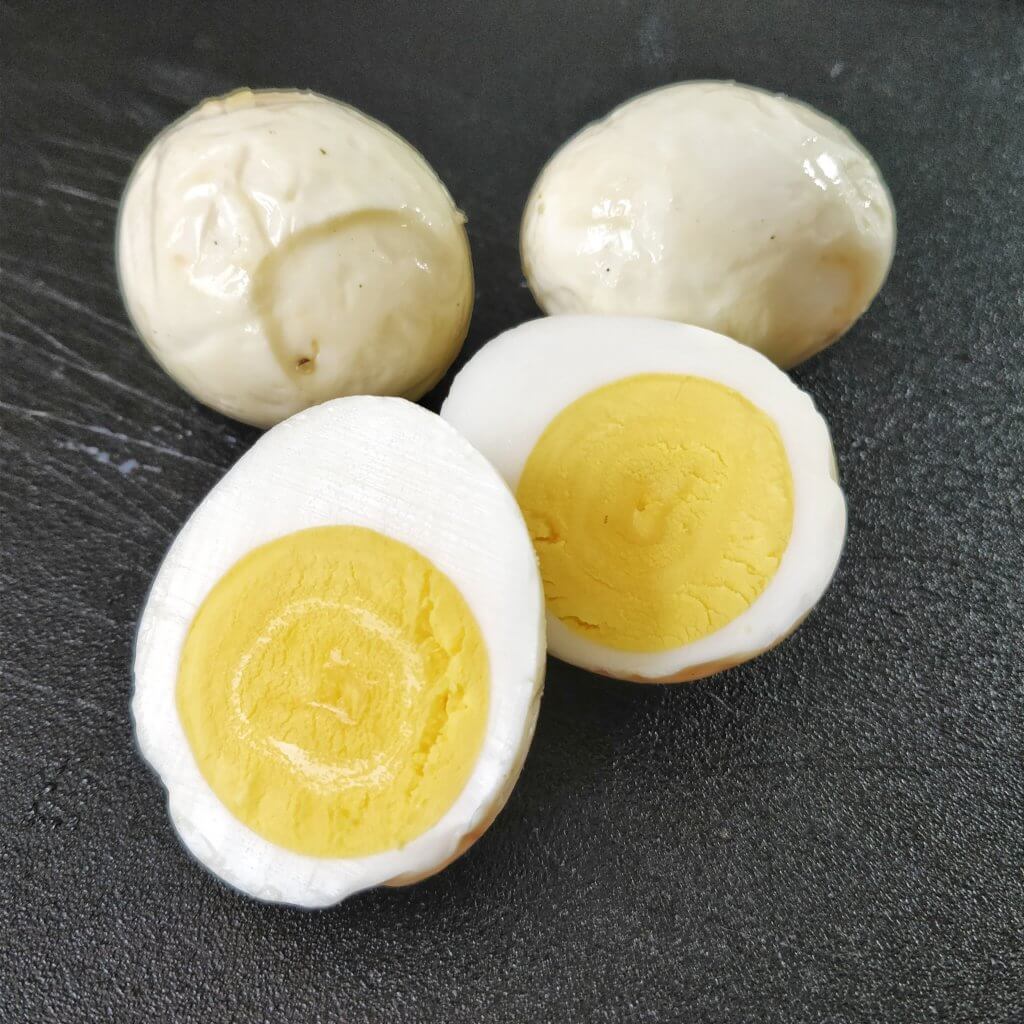
But let me tell you, folks: these eggs were good! I can’t say as much for the kraut (it’s too “fresh” for me, I prefer to age it for months, even a year), but the eggs can be eaten straight up. They require no salt, and have a slight, pleasant tang to them.
As I mentioned, I made deviled eggs from these and also the beet-pickled eggs. It’s going to be hard to go back to regular old deviled eggs after this.

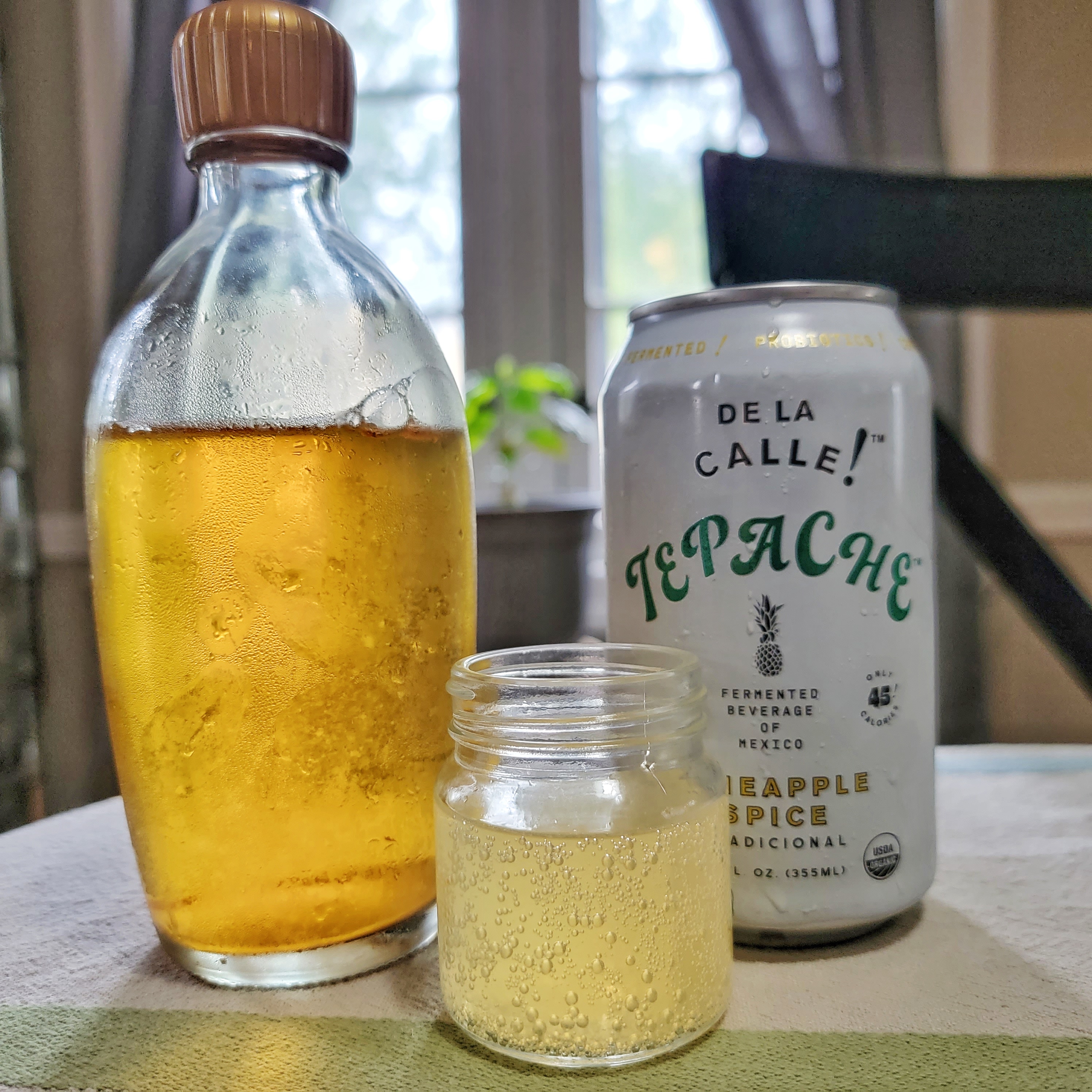

I like the color of the beet eggs. Would I just add eggs to a beet ferment?